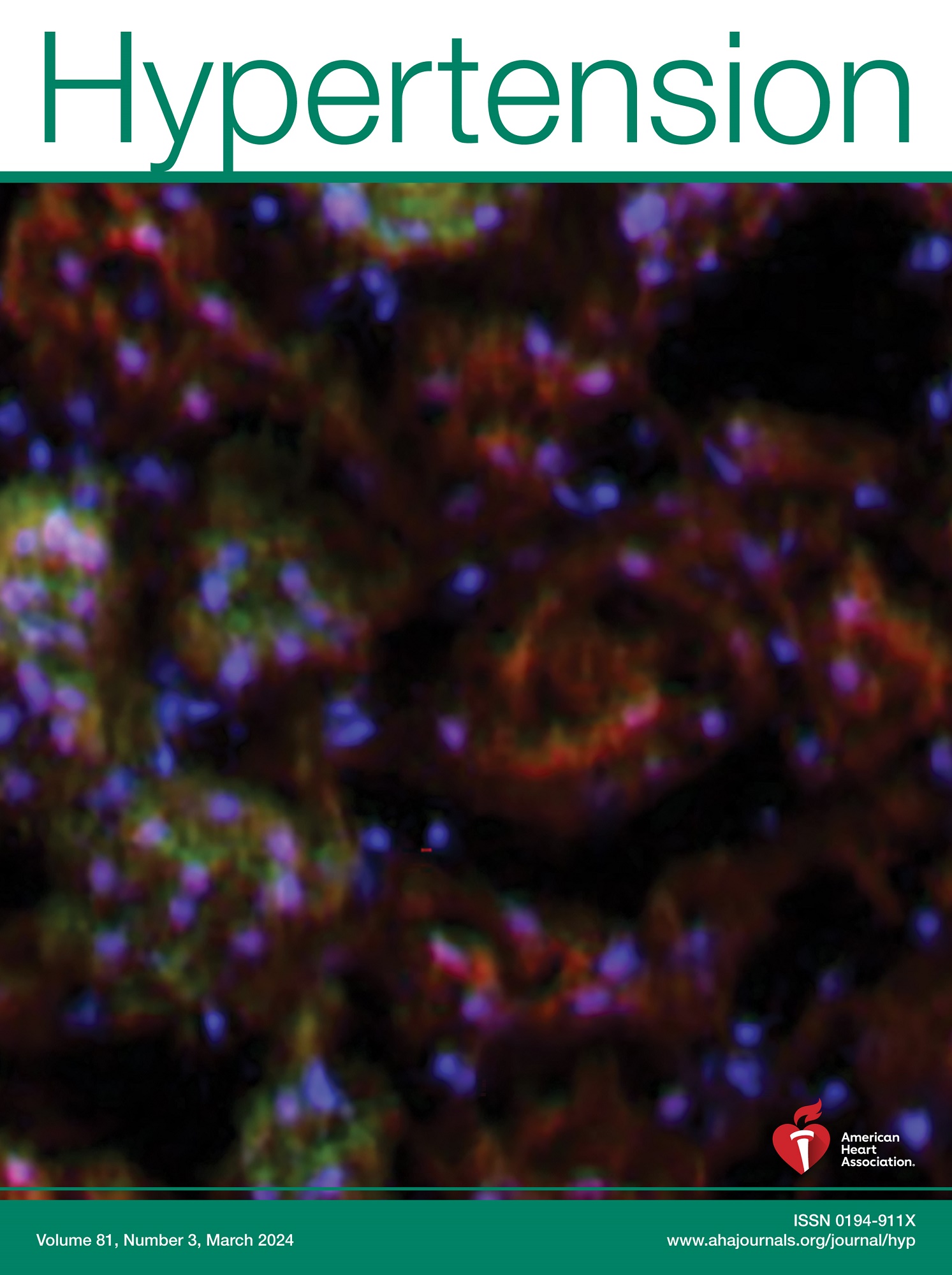共syntropin刺激的非显性肾上腺醛固酮储备预测原发性醛固酮增多症的手术结果。
IF 8.2
1区 医学
Q1 PERIPHERAL VASCULAR DISEASE
引用次数: 0
摘要
背景肾静脉取样(AVS)通常用于指导原发性醛固酮增多症(PA)的治疗。我们假设,在AVS期间,共syntropin刺激暴露了非显性肾上腺中醛固酮生成细胞的储备,并可能预测术后结果。方法纳入2015年1月至2024年12月在三级转诊中心接受共syntropin刺激前后AVS成功的PA患者。非优势肾上腺醛固酮储备用(1)对侧醛固酮储备比(=非优势肾上腺静脉中醛固酮后共syntropin与基线的比值)和(2)侧化指数(LI)比(=LI后共syntropin/LIbaseline)来评估。侧化以LI≥4为基础。结果434例患者(男性57%;平均年龄(53±12岁)。52例(12%)患者仅在基线时发生AVS侧化,46例(11%)患者仅在服用共syntropin后发生AVS侧化,166例(38%)患者在两种方案中均发生AVS侧化;170例(39%)患者有双侧PA。PA的严重程度从两种方案的侧边病例下降到仅在共synsynin后,仅基线,并一致双侧;相反,对侧醛固酮储备在这些组中增加。未治愈PA患者和双侧PA患者的对侧醛固酮储备较高(中位数[四分位数范围]分别为11.2[5.0-23.5]和17.9[9.1-32.0],而治愈患者为4.9 [2.5-9.4];P<0.01),黑人年龄≥45岁,CACNA1D突变。对侧醛固酮储备和后共心肌病激素偏侧和对侧抑制是残留PA的预测指标,而基线参数则不是。结论AVS时的syntropin刺激揭示了非显性肾上腺的醛固酮储备,暴露了肾上腺切除术后残留病变的风险。本文章由计算机程序翻译,如有差异,请以英文原文为准。
Cosyntropin-Stimulated Aldosterone Reserve of the Nondominant Adrenal Predicts Surgical Outcomes in Primary Aldosteronism.
BACKGROUND
Adrenal vein sampling (AVS) is commonly used to direct therapy of primary aldosteronism (PA). We hypothesized that cosyntropin stimulation during AVS exposes the reserve of aldosterone-producing cells in the nondominant adrenal gland and might predict postoperative outcomes.
METHODS
Patients with PA who underwent successful AVS before and after cosyntropin stimulation between January 2015 and December 2024 in a tertiary-referral center were included. The nondominant adrenal aldosterone reserve was assessed with (1) contralateral aldosterone reserve ratio (=aldosterone postcosyntropin-to-baseline ratio in the nondominant adrenal vein) and (2) lateralization index (LI) ratio (=LIpost-cosyntropin/LIbaseline). Lateralization was based on LI ≥4.
RESULTS
Four hundred thirty-four patients (57% men; mean age, 53±12 years) were included. AVS lateralized only at baseline in 52 (12%) patients, only after cosyntropin in 46 (11%), and in both protocols in 166 (38%); 170 (39%) patients had bilateral PA. PA severity decreased from cases lateralized in both protocols, to postcosyntropin only, baseline only, and consistently bilateral; conversely, the contralateral aldosterone reserve increased across these groups. The contralateral aldosterone reserve was higher in patients without PA cure and bilateral PA (median [interquartile range], 11.2 [5.0-23.5] and 17.9 [9.1-32.0], respectively, versus 4.9 [2.5-9.4] in those cured; P<0.01) and in Black individuals, those aged ≥45 years, and with CACNA1D mutations. Contralateral aldosterone reserve and postcosyntropin lateralization and contralateral suppression were predictive of residual PA, while baseline parameters were not.
CONCLUSIONS
Cosyntropin stimulation during AVS unveils the aldosterone reserve in the nondominant adrenal gland, exposing the risk of residual disease after adrenalectomy.
求助全文
通过发布文献求助,成功后即可免费获取论文全文。
去求助
来源期刊

Hypertension
医学-外周血管病
CiteScore
15.90
自引率
4.80%
发文量
1006
审稿时长
1 months
期刊介绍:
Hypertension presents top-tier articles on high blood pressure in each monthly release. These articles delve into basic science, clinical treatment, and prevention of hypertension and associated cardiovascular, metabolic, and renal conditions. Renowned for their lasting significance, these papers contribute to advancing our understanding and management of hypertension-related issues.
 求助内容:
求助内容: 应助结果提醒方式:
应助结果提醒方式:


